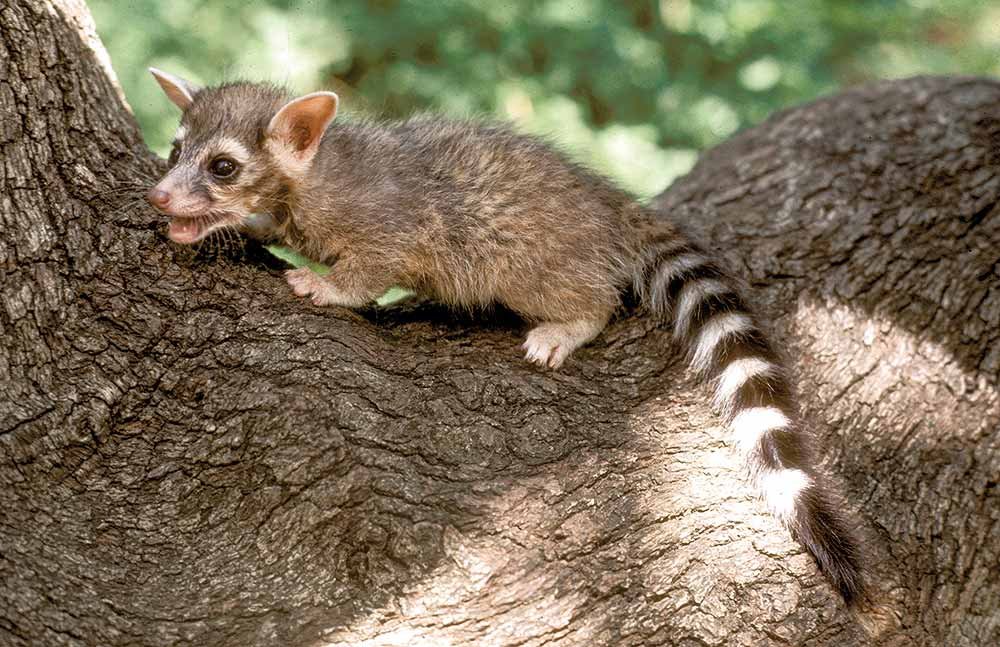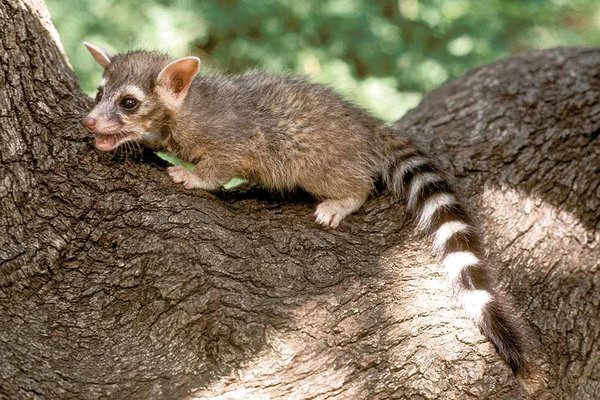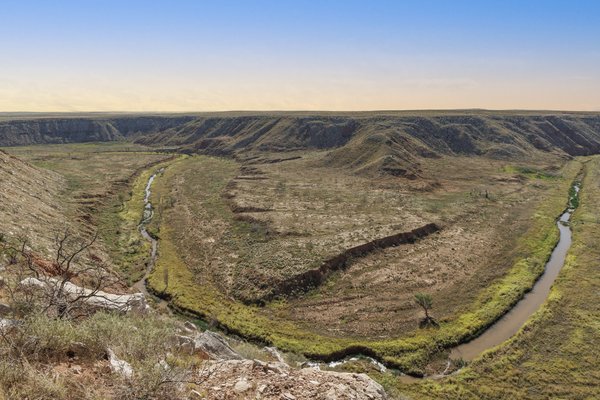I was wheezing a bit and began to wonder if, at age 58, I was a little “too up there in age” to be climbing canyon walls. Looking uphill, I could see the trail camera that the landowner and I had placed. My quest was to get up there, check its batteries and solar panel, and then head back down to safety as quickly and safely as I could. I had the camera facing upward and aimed at an even steeper rocky cliff above. I'd placed a similar setup in two other Panhandle counties and one in western Oklahoma.
My objective? I was hoping to obtain photos and videos to document the ringtail (Bassariscus astutus), a fascinating mammal in the family that includes the raccoon. A study by a graduate student of Raymond Matlack of West Texas A&M University found that ringtails in the Panhandle may be restricted to steep, rocky escarpments. In a trapping effort at various levels of the canyon, ringtails were found only on the steepest cliffs, high up on the canyon walls. Home ranges generated from data of several radio-tracked individuals in that study confirmed that the ringtails of Palo Duro Canyon pretty much stay high on the rocky cliffs. Let's put it this way: It would be a shorter route to drop into their habitat from above than to hike to it from below.
The ringtail gets its name from the striped tail it shares with its raccoon cousins. In its case, the tail contains 14-16 alternating black and white rings ending in a black tip. Ringtails have large eyes surrounded by white rings of fur, large rounded ears, and short legs. Adults reach lengths of about 34 inches including their distinctive tail, which is about as long as its head and body combined. Adults can reach weights of up to 2 to 3 pounds.
Much like the raccoon, the ringtail eats a varied diet, consisting of almost any critter it can catch, such as rodents, insects and spiders, and is just as partial to carrion and fruits produced by native plants.
Ringtails are found through much of the western United States. In Texas, they are most numerous in the Edwards Plateau, Cross Timbers, Trans-Pecos and on the Caprock Escarpment and walls of its associated canyons.
Throughout their range of distribution, ringtails are usually associated with rocky habitats. They are well-adapted for climbing vertical walls, cliff faces, trees and even cacti, as well as running along precarious ledges and limbs. The animal's long tail aids in balance, and they can reverse direction on narrow ledges by performing what my daughter-in-law, a former college cheerleader, defined as a “backflip with a half-twist.”
Ringtails can maneuver along cliffs and ledges by ricocheting from wall to wall. They can also climb in small vertical crevices by pressing all four feet on one wall and their back against the other. Rapid, headfirst, vertical descents are accomplished by rotating the hind foot 180 degrees, allowing the pads of the feet and the claws to retain contact with the surface.
For its home, the ringtail uses rock crevices, spaces between boulders, animal burrows, and cavities in mine shafts and buildings. In some areas of their range like Central Texas, ringtails do just fine denning in cavities in trees and snags.
People are often amazed, if not skeptical, when they hear someone mention that there are ringtails in a given area of their range. Their occurrence can be very “patchy” — for example, the rocky bluffs of a section of a canyon that knifes its way through a vast region of prairie. Furthermore, the ringtail is strictly nocturnal and is likely to be the last animal to emerge for a night of foraging and last to return to its den in the morning. This may be an adaptation to help reduce the overlap of activity with its main predator, the great horned owl.
Sometimes the only evidence of ringtails is their tracks - and droppings. Ringtails suffer fairly high mortality due to traffic on roadways, and they often get noticed when raiding trashcans and dog dishes. Quite commonly they will den in the attics of human dwellings.
The cliffs of Armstrong County may tax this old wildlife biologist physically, but getting even a single photo of a ringtail in this area outside of Palo Duro Canyon State Park would make the aches and pains worthwhile. I should have known that for ringtails you should drop down just a little ways from the plains above instead of climbing upward from the canyon below. Easier said than done — that might be possible if I could effortlessly ricochet down just a little ways. Regardless, searching for this fairly common but elusive southwestern icon is worth the effort.
- Common name: Ringtail
- Scientific name: Bassariscus astutus
- Habitat: Ringtails are adaptable when it comes to habitat, but they prefer rocky areas like stone fences or canyon walls.
- Diet: Insects, birds, reptiles, amphibians, small mammals and native fruits and berries.
- Did you know?: From a distance, ringtails can resemble cats due to their pointy ears and fluffy tails. They're not felines at all though — the creatures are actually in the raccoon family.






